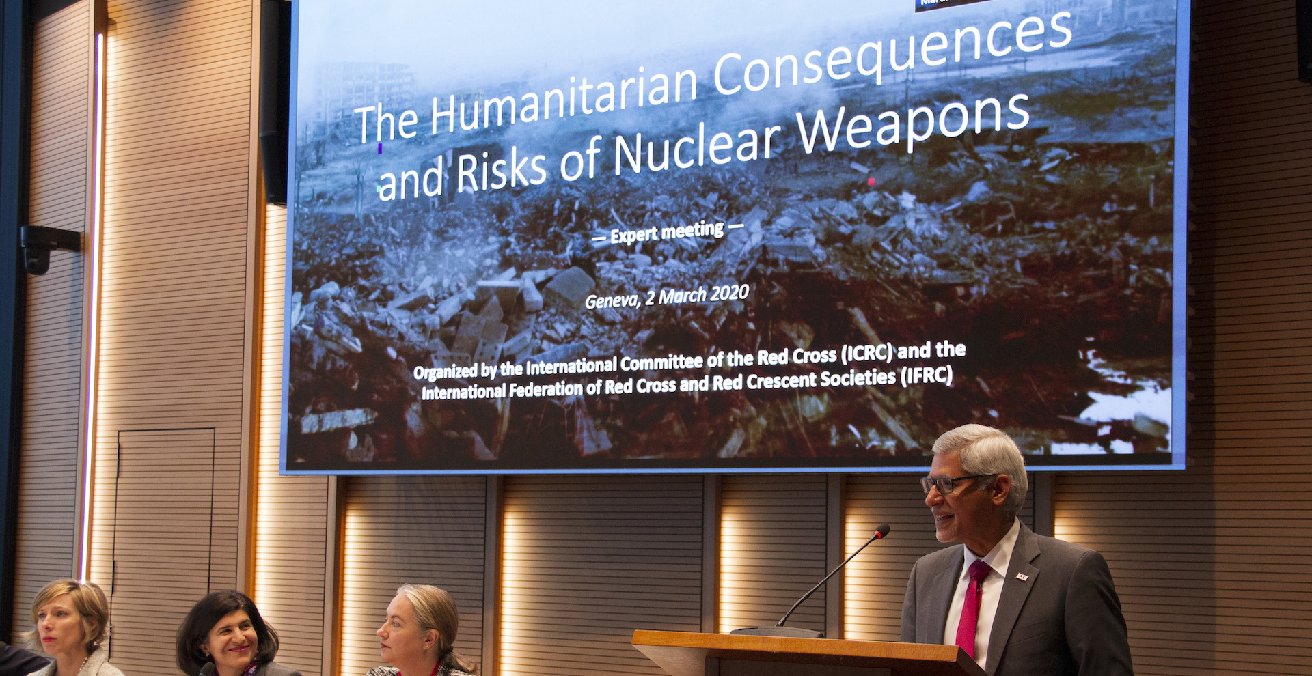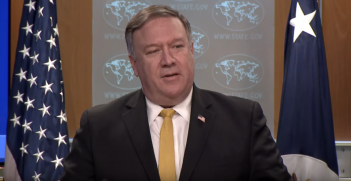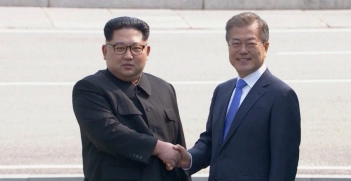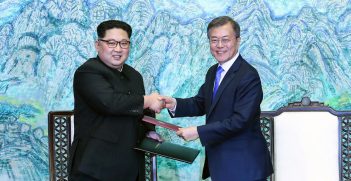Always Immoral, Now Illegal: The Nuclear Ban Treaty Becomes Law

The Treaty on the Prohibition of Nuclear Weapons (TPNW) prohibits the development, production, possession, transfer, receipt, testing, hosting, use, and threat of use of nuclear weapons. Today it becomes law – the most significant multilateral development in nuclear arms control since the Nuclear Non-Proliferation Treaty (NPT) entered into force in 1970.
Setsuko Thurlow, a survivor of the Hiroshima bombing in 1945, celebrated the adoption of TPNW at the UN in 2017 by noting that nuclear weapons, always “immoral,” were now “also illegal.” It establishes a new normative settling point on the ethics, legality, and legitimacy of the bomb. The TPNW sees the realisation of the world’s commitment to securing the legally binding prohibition of all three classes of weapons of mass destruction, with biological and chemical weapons having been banned in 1972 and 1993.
States Parties and Supporters
The impetus behind the TPNW was alarm at rising nuclear threats, frustration at non-existent nuclear disarmament negotiations, and exasperation at the dismissive attitude of the nuclear powers to nuclear disarmament. The NPT seems wearied with age. As well, its normative potential appears exhausted with respect to nuclear disarmament of the nuclear weapon states (NWS) that were granted conditional and temporary exemption from the prohibition on possession. Not one warhead was ever dismantled, nor a single multilateral disarmament negotiation session convened under NPT auspices. A total of 13,400 nuclear bombs are held by nine countries, with Russia and the US accounting for 91 percent of the global stock. A good example of the “NWS with attitude” syndrome is the derision on open display in a speech last February by the Trump administration’s top arms control official Chris Ford, who belittled the arms control community as naïve virtue-signallers.
In these circumstances, what is a responsible non-nuclear-weapon NPT party to do? One answer from American, Belgian, and South African analysts is to exit from the NPT as a sham treaty that merely legitimises the monopolistic possessor status of the five NWS. An alternative argument, developed in the Bulletin of the Atomic Scientists, is to affirm the TPNW as an exercise of sovereignty reconceptualised as responsibility in fulfilment of the Article 6 obligation on all NPT parties, not just the NWS allowing the majority of states to reclaim nuclear agency. Their initiative was successful in gaining broad international traction by reframing the national security discourse in the language of universal humanitarian principles, and the TPNW embodies their collective moral revulsion at the bomb. Its impact will be felt differently in countries supporting it, those possessing nuclear weapons, and those relying for security on the nuclear umbrella as allies.
Nuclear-Armed States
The treaty cannot impose legal obligations on non-parties. But it will reorder the prevailing cluster of humanitarian laws, norms, practices, and discourse that shape how we think about and act in relation to nuclear weapons. Its power of anathematisation flows from the UN’s key role as the sole custodian and dispenser of collective international legitimacy. The treaty gives authoritative legal underpinning to the civil society-led UN stigmatisation of nuclear weapons. Beatrice Fihn, executive director of ICAN, says the TPNW “is the UN at its best – working closely with civil society to bring democracy to disarmament.” By changing the prevailing normative structure, it will shift the balance of costs and benefits of possession of weapons branded illegal by the international community.
Treaty supporters and opponents are united in reaffirming the existing norms against nuclear proliferation and testing. It will also be deployed by supporter states and civil society advocates as evidence of a new global political norm against possession. An additional legal effect of the ban treaty will be to reinforce the disarmament norm under Article 6 of the NPT. The no-first-use norm, buttressed by consistent and widespread state practice, is arguably a peremptory norm. Lately, cyber and AI technological developments have begun to blur the dividing line between conventional precision munitions and nuclear weapons. The TPNW will harden the normative boundary between conventional and nuclear weapons.
There have been two outbreaks of armed conflict in recent times between nuclear-armed states: India-Pakistan in February 2019, and India-China in 2020. With India, Pakistan, and North Korea lying outside, the NPT is irrelevant as the legal governance construct for those potential nuclear flashpoints. From our geographical–cum-geopolitical vantage point, therefore, the TPNW is advantageous in being non-discriminatory and universal, applying equally to all state parties.
Nuclear-Dependent Allies
In recent years the US has embarked on an aggressive nuclear modernisation program to enlarge its nuclear arsenal, develop new types of “usable” low-yield bombs and lower the threshold for their use. The US scuttled the 2015 Iran nuclear deal that had been working well, causing a rise in tensions in the Persian Gulf. It also killed off the Intermediate-Range Nuclear Forces Treaty (INF) that contributed to the end of the Cold War and underpinned European strategic stability for three decades, gave notice of withdrawal from the Open Skies Treaty, and refused to discuss the extension of New START that is due to expire next month.
These actions by “the high priest of nuclear orthodoxy” have left US allies looking foolish. Nuclear weapons are integral to the North Atlantic alliance. Three NATO states possess the bomb, several others host the bomb whose ownership remains with the possessor states, and to be credible, nuclear deterrence requires operational plans to use nuclear weapons. Australia, Japan, and South Korea depend for their national security on US nuclear weapons. For decades, several NATO and Pacific allies have trumpeted their nuclear disarmament credentials, but, like St Augustine’s call to the Lord to make him chaste, “not just yet.” The TPNW calls the bluff on their Janus-like approach to alliance requirements and the NPT obligation to promote nuclear disarmament – hunting with the nuclear hounds while running with the disarmament hare.
The TPNW forbids parties to assist, encourage, or induce anyone to engage in or receive any assistance from any prohibited activity; or to permit stationing, installation, or deployment of nuclear weapons on their territory. The text of the ANZUS Treaty is not incompatible with these, but some current practices, like in North West Cape and Pine Gap, and possibly some joint military exercises at sea, would need to be terminated.
The TPNW-induced deepening crisis of legitimacy for nuclear deterrence will compound the domestic difficulties for umbrella states. Polls show two-thirds support among Japanese and 71 percent among Australians for signing the treaty. Civil society and states have been spurred to mobilise around the new normative framework to achieve concrete progress towards the total elimination of nuclear weapons. Umbrella states could contribute to some practical measures of risk reduction by encouraging, and perhaps even publicly pressuring, the relevant possessor states to breathe life back into the nuclear arms control agenda. To this end, the nuclear powers could be urged to:
- renew New Start;
- resurrect the INF and Iran deal;
- maintain the Open Skies Treaty;
- co-sponsor a resolution in both the UN Security Council and General Assembly reaffirming that a nuclear war cannot be won and must never be fought;
- take nuclear weapons off high alert status, ready to launch on warning; and
- adopt no-first-use as official policy with nuclear force postures and deployments to match.
Ramesh Thakur is emeritus professor in the Crawford School of Public Policy, Australian National University; Senior Research Fellow, Toda Peace Institute; a former United Nations Assistant Secretary-General; and a member of the Board of Directors of the Asia-Pacific Leadership Network for Nuclear Non-Proliferation and Disarmament.
This article is published under a Creative Commons Licence and may be republished with attribution.





